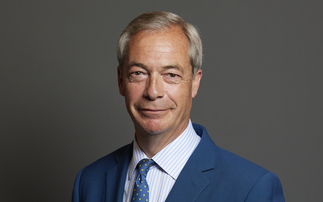In our latest property related interview, John Wilson, Head of Property at Britannic Asset Management explains the investment process our property team follows and how the UK Property Fund is constructed.
Transcript
Well, with me now is John Wilson, Head of Property at Britannic Asset Management. John, thanks very much indeed for joining us. What are the objectives of the UK property fund?
The objective of the fund is to achieve capital and income growth by investingin UK, mainly in UK commercial property. The fund can invest in the three mainsectors: retail, office and industrial sectors and also the smaller leisure sector.It does not invest in residential property. It can invest in other asset classesbut we really expect it to mainly be invested in UK commercial property. Thekey aims that we have for it are achieving above average returns, maintaininga diversified portfolio, running ideally modest cash levels, we’d liketo keep those within a range of 0-5%, that will be subject to availability ofproperties and cashflows from time to time, and also maintain a good income yieldfor the fund.
How would you characterise the style of the fund? What’s your approach?
Yes, strategy, we do strategy on a quarterly, we have a quarterly review processusing a consistent disciplined framework for that. The key inputs to that arereally getting a handle on the economic outlook, for which we use various thingssuch as consensus economic forecasts and input from our bond team, market indicators,such as supply and demand matrix and yields, and also some key property indicatorsthat we’ve developed ourselves over time, value relatives, rental indicatorsand so on. And using all of this, we form a market view, a view on the outlookfor the sectors. And this is used as a framework to guide our subsequent stockselection.
Yes, let’s have a look at the new selection process, what guidesthat?
We aim to have a consistent framework again for ensuring that when we’reselecting properties, they are suitable to meet the individual funds’ objectives.Across the board, the key things we’re tending to look at are good fundamentals.Does the property have good fundamentals, and for example location. Portfoliofit, if we bring that particular property into the fund, will the overall portfolioconstruction still remain how we want it. Growth prospects are an area wherewe’re looking very closely at because at the end of the day we want toachieve income growth. The risk factors surrounding any particular property,we want to ensure there is a discount in the yield that we’re paying. Andideally if there is active management potential, things we can do to add valuewith that particular property, then that’s another tick in the box as well.And all acquisitions that we’re making receive a very thorough due diligenceprocess to ensure that we know everything there is to know about the propertybefore we buy it.
What risk controls do you have in place?
We have a range of controls. I mean the key aim behind our controls is to ensurethat we are achieving adequate diversification within our funds, and in particularin this case this fund. The main risk controls affecting this fund are a sectormismatch control of +/-15% for the individual sectors, a lot size control, meaningthat we don’t buy properties or don’t hold properties that are morethan 10% of the overall fund. A couple of exceptions to that, one being retailwarehouse parts and the other being shopping centres; they’re very largeassets by definition but they are also internally diversified through the rangeof tenants that occupy them. We have a speculative development control maximumof 10%, we wouldn’t envisage going anywhere near that maximum even to theextent that we might do some speculative development in the future. And a controlon a number of properties being between 30 and 80, again aimed at the adequatediversification there. And we have reporting arrangements for these controlsusing various internal systems, like Sentinel and IPD reports that we get fromtime to time.
Now there are a number of property funds on the market and there are lots offunds to choose from, so why choose this fund?
This is one of the new generation of authorised property unit trusts but beforenow it’s only been possible to have up to 80% commercial property in anauthorised property unit trust and indeed most, or possibly all, of the fundscreated under the old rules have significantly less in commercial property thaneven that 80%. We have the ability within this fund to invest up to 100% in commercialproperty. The fund currently is in practice fully invested in property, it hasminimal cash holding at the moment. It’s a good quality portfolio, it’swell diversified with 38 properties, 120 tenants, provides an attractive incomeyield after tax and all costs; an income yield of 4½%.* And somewhat uniquelyfor this kind of fund, provides monthly distributions of income as well.
Now I know the fund hasn’t been in place for very long, what’stheoutlook for the sector?
We’re relatively optimistic about the outlook for the sector, we believetotal returns in 2005 will be around 10%, given an income yield of 6%, that onlyrequires a comparatively modest 4% capital growth, which if you compare it with2004 when the property market delivered 12% or 13% capital growth, is comparativelymodest.** We see that growth coming from a further slight inward correction ofyields; the balance of supply and demand in the investment market at the momentsuggests that can and will continue, to a lesser degree than last year but neverthelesscontinue. And on the occupational side, in terms of rental growth, we think rentalgrowth will probably strengthen slightly this year, but probably still be relativelytame at around 2% or 3%, but that combination of 6% income yield plus a bit ofinward yield correction and a small bit of rental growth, we think can readilyproduce 10% total return this year.
John, thanks very much indeed.
My pleasure.
* Yield as at 28/02/05 is not guaranteed and may vary. Yield is calculated usingthe full offer price, net of charges and net of tax.
** Source: IPD Monthly Index to 31/01/05.
Past performance is not necessarily a guide to future performance. The valueof units and the income from them can go down as well as up and is not guaranteed.
Information and opinions contained in this interview have been compiled or arrived at by Britannic Asset Management Limited. Britannic Asset Management Limited and Asset.tv Ltd accept no liability for any loss arising from the use hereof nor make any representation as to their accuracy or completeness. Any underlying research or analysis has been procured by Britannic Asset Management Limited for its own purposes and may have been acted on by Britannic Asset Management Limited or an associate for its or their own purposes.
Britannic Asset Management is the trading name of Britannic Asset Management Limited group which includes Britannic Fund Managers Limited and Britannic Investment Management Limited. Both companies are authorised and regulated by the Financial Services Authority.














